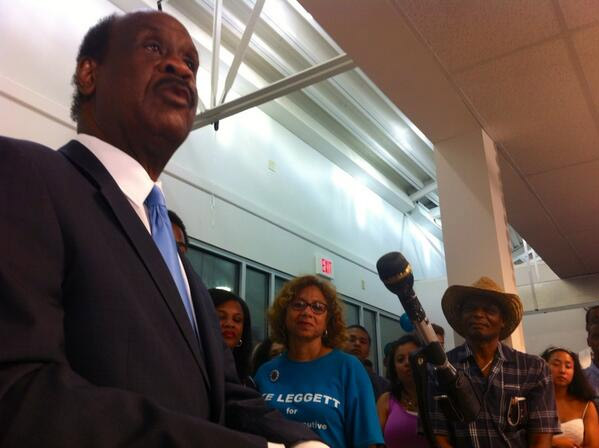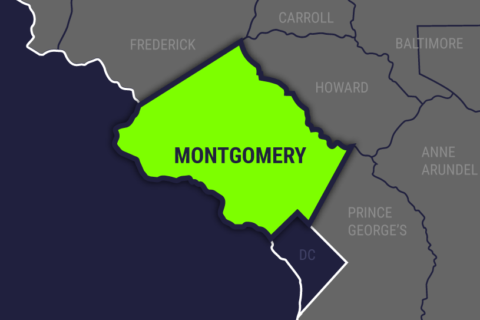ROCKVILLE, Md. — Commuters could be cruising past clogged Route 29 traffic while connected to Wi-Fi within four years under new plans announced Wednesday in Montgomery County.
The plans also include some additional express buses along existing routes in other parts of the county.
County Executive Ike Leggett says that after working with Howard County, he says he believes an effective Route 29 bus rapid transit system could be built by the end of the decade using only existing shoulders and medians for new bus-only lanes.
Leggett made the announcement of the Route 29 plan, and smaller bus improvements in some other parts of the county, flanked by county council members Roger Berliner, Marc Elrich and Nancy Navarro.
The county had proposed a whole network of bus rapid transit lines, but that overall system and idea to create it as an independent entity were shot down, leading to the current plan.
“This will be done in stages, it will not have the larger plan whereby we had laid out for every year for the next 10 or 15 years … [but] it’s a plan that is financially feasible, it’s something that we can do in a reasonable period of time, and it has a tremendous impact on the quality of life, [and] the development that has occurred thus far and will occur in the foreseeable future.”
The route to be built along Columbia Pike/Colesville Road would remain within existing traffic lanes in the Four Corners area, where residents had expressed concerns.
While the precise costs of the route have not been determined, Leggett is including $6.5 million in his capital budget proposal to fund the design.
“We have a fair amount of confidence that [Route 29] is manageable — that’s not to say it’s free, but it is something that we can do, and that we need to do,” Berliner says.
Elrich calls bus rapid transit the only option to get people moving in any affordable way.
“[Route 29] is immediate because it’s easy — you’ve got these huge median strips or the curbs, and so you can do a lot of work without disrupting anything … and it’s a solution that deals with the neighborhood concerns and gets us from Howard County to Silver Spring,” Elrich says.
Howard County projections show lots of riders switching to a bus that zooms by Route 29 traffic.
“That’s a big deal because it takes a lot of the pressure off of [Route 29], and it’ll be good for residents farther down [Route 29] who’ve been experiencing all this pass-through traffic,” Elrich says.
Navarro sees a reliable way to get around the eastern part of the county that also connects to the Columbia and Ellicott City areas in Howard County as an opportunity put off for far too long for those in the White Oak and surrounding area.
“This is a big deal. In some areas it’s about congestion, for this area of the county it’s about the possibility for jobs, the possibility for positive opportunities for young people, the possibility for finally having destination spots,” she says.
Leggett’s new plan puts off any immediate bus rapid transit plans in other parts of the county.
He says he remains committed to eventually adding bus-only lanes and other improvements along MD 355, Viers Mill Road and for the Corridor Cities Transitway.
In the near term, Leggett is recommending new limited-stop rush-hour Ride On service between Lakeforest Transit Center and the Medical Center Metro Station and new express rush-hour service from Clarksburg to Shady Grove, and he is asking the state to fund new limited-stop Metrobus rush-hour service along Viers Mill Road. Those changes could be in place in a year or two.
“[Route 355] is so terribly important, but much more complicated,” Berliner says. “So that’s going to take longer … so you want to move forward with what you can faster, and at the same time do everything you can to catch up on the others.”
The cities of Gaithersburg and Rockville are working with the county on proposed changes for Route 355.
Leggett also wants to spend $1.25 million over three years to help brand the new bus rapid transit system, market it, and to further reach out to the community about the projects.
Berliner says that outreach is key.
“The public really still doesn’t understand the benefits of bus rapid transit, they go ‘Bus? Really? You expect me to get on the bus?’ and the future is choice riders: we want people to choose to get on the bus, and you do that when you have a high quality service.”
Berliner talks of riders who can sit with laptops open, connected to Wi-Fi — getting things done during time that’s right now wasted by people sitting behind the wheel.
“Develop a first-class system, [and] people take it, thank you very much, instead of sitting in their cars in traffic and cursing, etc.,” Berliner says.







